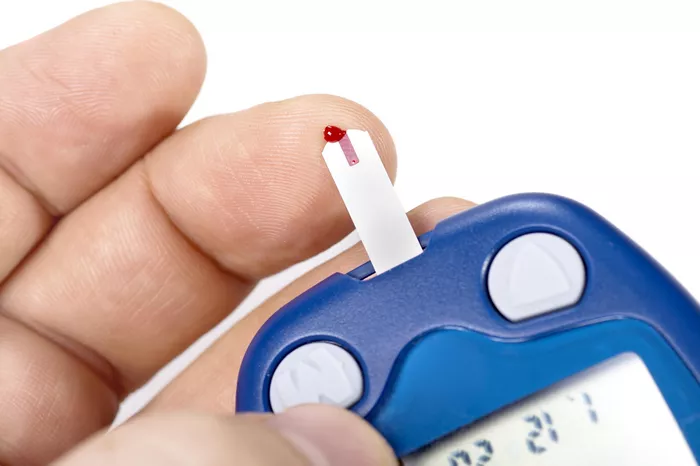Insulin resistance is a condition where the body’s cells become less responsive to the hormone insulin. This inefficiency in responding to insulin leads to higher levels of blood glucose, which can have various adverse effects on health. This article explores the concept of insulin resistance, its causes, symptoms, diagnosis, and management, as well as its long-term implications.
Understanding Insulin and Its Role in the Body
What is Insulin?
Insulin is a hormone produced by the beta cells in the pancreas. It plays a crucial role in regulating blood sugar levels by facilitating the uptake of glucose into the cells, where it is used for energy. Insulin also helps store excess glucose in the liver for future energy needs.
How Insulin Works
When you eat, carbohydrates are broken down into glucose, which enters the bloodstream. The rise in blood glucose signals the pancreas to release insulin. Insulin binds to receptors on the surface of cells, allowing glucose to enter and be used for energy. This process helps lower blood sugar levels to a normal range.
What is Insulin Resistance?
Definition
Insulin resistance occurs when the body’s cells become less sensitive to the effects of insulin. As a result, higher levels of insulin are required to achieve the same effect on glucose uptake and blood sugar regulation. Over time, the pancreas may struggle to produce enough insulin to keep blood sugar levels within a healthy range, leading to elevated blood glucose levels.
Mechanism
The exact mechanisms underlying insulin resistance are complex and not fully understood. However, it is believed to involve a combination of genetic, environmental, and lifestyle factors. Key mechanisms include:
Receptor Dysfunction: Insulin receptors on the cell surface may not function properly, reducing the cells’ ability to respond to insulin.
Post-Receptor Defects: Defects in the signaling pathways inside the cell can impair the actions of insulin.
Inflammation: Chronic inflammation, often associated with obesity, can interfere with insulin signaling.
Lipid Accumulation: Excess fat, particularly in the liver and muscle tissues, can disrupt insulin signaling pathways.
Causes and Risk Factors of Insulin Resistance
Genetic Factors
Genetics play a significant role in the development of insulin resistance. A family history of type 2 diabetes or metabolic syndrome increases the risk of developing insulin resistance. Specific genetic mutations can affect insulin signaling and glucose metabolism.
Lifestyle Factors
Several lifestyle factors contribute to insulin resistance, including:
Obesity: Excess body fat, especially visceral fat around the abdomen, is strongly associated with insulin resistance. Adipose tissue releases hormones and inflammatory cytokines that can interfere with insulin signaling.
Sedentary Lifestyle: Lack of physical activity reduces muscle mass and increases fat accumulation, both of which can impair insulin sensitivity.
Diet: A diet high in refined carbohydrates, sugars, and unhealthy fats can promote weight gain and increase the risk of insulin resistance.
Smoking: Tobacco use is linked to increased inflammation and oxidative stress, which can impair insulin function.
Medical Conditions
Certain medical conditions and medications can contribute to insulin resistance, including:
Polycystic Ovary Syndrome (PCOS): A common endocrine disorder in women that is often associated with insulin resistance.
Sleep Apnea: A condition characterized by interrupted breathing during sleep, which can lead to hormonal imbalances and insulin resistance.
Non-Alcoholic Fatty Liver Disease (NAFLD): Excess fat in the liver is strongly associated with insulin resistance.
Cushing’s Syndrome: A condition caused by excessive cortisol production, which can interfere with insulin action.
Medications: Certain medications, such as glucocorticoids and antipsychotics, can induce insulin resistance.
Symptoms and Complications of Insulin Resistance
Early Symptoms
Insulin resistance often develops gradually and may not cause noticeable symptoms in its early stages. However, some early signs and symptoms may include:
Fatigue: Feeling unusually tired or lacking energy, even after adequate rest.
Increased Hunger: Cravings for sweets and carbohydrates due to fluctuating blood sugar levels.
Weight Gain: Particularly around the abdomen, despite no changes in diet or activity level.
Difficulty Losing Weight: Struggling to lose weight even with diet and exercise efforts.
Acanthosis Nigricans: Dark, velvety patches of skin, usually in body folds such as the neck, armpits, and groin.
Long-Term Complications
If left unmanaged, insulin resistance can lead to several serious health complications, including:
Type 2 Diabetes: Persistent insulin resistance can cause the pancreas to become exhausted, leading to inadequate insulin production and the development of type 2 diabetes.
Cardiovascular Disease: Insulin resistance is a significant risk factor for heart disease, hypertension, and atherosclerosis.
Metabolic Syndrome: A cluster of conditions, including high blood pressure, high blood sugar, excess abdominal fat, and abnormal cholesterol levels, that increase the risk of heart disease, stroke, and diabetes.
Non-Alcoholic Fatty Liver Disease (NAFLD): Insulin resistance is closely linked to the development and progression of NAFLD.
Polycystic Ovary Syndrome (PCOS): Insulin resistance is common in women with PCOS and can exacerbate symptoms such as irregular menstrual cycles and infertility.
Diagnosing Insulin Resistance
Clinical Assessment
Diagnosing insulin resistance involves a combination of clinical assessment, medical history, and laboratory tests. Key components of the diagnostic process include:
Medical History: Reviewing risk factors, family history, and symptoms.
Physical Examination: Assessing body weight, body mass index (BMI), and signs of insulin resistance, such as acanthosis nigricans.
Laboratory Tests
Several laboratory tests can help diagnose insulin resistance and assess its severity:
Fasting Blood Glucose: Measuring blood sugar levels after an overnight fast. Elevated fasting glucose levels may indicate insulin resistance.
Oral Glucose Tolerance Test (OGTT): Measuring blood sugar levels before and after consuming a glucose-rich drink. Impaired glucose tolerance suggests insulin resistance.
Hemoglobin A1c (HbA1c): Measuring the average blood sugar levels over the past 2-3 months. Higher HbA1c levels may indicate poor blood sugar control.
Insulin Levels: Measuring fasting insulin levels. Elevated insulin levels can be a marker of insulin resistance.
Homeostasis Model Assessment of Insulin Resistance (HOMA-IR): A mathematical formula that uses fasting glucose and insulin levels to estimate insulin resistance.
Managing Insulin Resistance
Lifestyle Modifications
Lifestyle changes are the cornerstone of managing insulin resistance. Key strategies include:
Diet
Balanced Diet: Focus on a diet rich in whole grains, lean proteins, healthy fats, and plenty of fruits and vegetables.
Low Glycemic Index Foods: Choose foods with a low glycemic index (GI) to help maintain stable blood sugar levels.
Avoid Sugary Foods: Limit intake of sugary foods and beverages that can cause rapid spikes in blood sugar.
Healthy Fats: Include sources of healthy fats, such as avocados, nuts, seeds, and olive oil.
Physical Activity
Regular Exercise: Aim for at least 150 minutes of moderate-intensity exercise, such as brisk walking, swimming, or cycling, per week.
Strength Training: Incorporate resistance exercises, such as weightlifting or bodyweight exercises, to build muscle mass and improve insulin sensitivity.
Active Lifestyle: Reduce sedentary behavior by taking regular breaks from sitting and incorporating more physical activity into daily routines.
Weight Management
Achieve and Maintain a Healthy Weight: Losing excess weight, particularly abdominal fat, can significantly improve insulin sensitivity.
Sustainable Weight Loss: Focus on gradual, sustainable weight loss through a combination of healthy eating and regular physical activity.
Medications
In some cases, lifestyle changes may not be sufficient to manage insulin resistance, and medication may be necessary. Common medications include:
Metformin: A medication that improves insulin sensitivity and reduces glucose production by the liver. It is often used in the treatment of type 2 diabetes and can be beneficial for managing insulin resistance.
Thiazolidinediones: A class of medications that improve insulin sensitivity by reducing insulin resistance in muscle and adipose tissue.
GLP-1 Receptor Agonists: Medications that mimic the action of the incretin hormone GLP-1, which increases insulin secretion and reduces glucagon production.
Monitoring and Follow-Up
Regular monitoring and follow-up with a healthcare provider are essential for managing insulin resistance. This includes:
Blood Sugar Monitoring: Regularly checking blood sugar levels to ensure they are within the target range.
Regular Check-Ups: Periodic visits to the healthcare provider to assess progress, review medications, and make necessary adjustments to the treatment plan.
Continuous Education: Staying informed about insulin resistance and diabetes management through educational resources and support groups.
Preventing Insulin Resistance
Healthy Lifestyle
Adopting a healthy lifestyle is the most effective way to prevent insulin resistance. Key preventive measures include:
Balanced Diet: Eating a diet rich in whole foods, fiber, and healthy fats while limiting processed foods and sugars.
Regular Exercise: Engaging in regular physical activity to maintain a healthy weight and improve insulin sensitivity.
Weight Management: Achieving and maintaining a healthy weight through a combination of diet and exercise.
Stress Management: Practicing stress-reducing techniques such as mindfulness, yoga, or meditation.
Regular Health Screenings
Regular health screenings can help detect insulin resistance early and prevent the development of type 2 diabetes and other complications. Key screenings include:
Fasting Blood Glucose: Regularly checking fasting blood glucose levels, especially for individuals with risk factors for insulin resistance.
HbA1c: Periodic testing of HbA1c levels to monitor long-term blood sugar control.
Lipid Profile: Monitoring cholesterol and triglyceride levels to assess cardiovascular risk.
See also: How Insulin Resistance Leads to Type 2 Diabetes
Conclusion
Insulin resistance is a common condition with significant implications for health. Understanding its causes, symptoms, and management is crucial for preventing and managing the associated risks, including type 2 diabetes and cardiovascular disease. By adopting a healthy lifestyle, making informed dietary choices, engaging in regular physical activity, and seeking medical care when necessary, individuals can effectively manage insulin resistance and maintain optimal health. Regular monitoring and follow-up with healthcare providers are essential for ongoing management and prevention of complications.
Related topics:
How Does Insulin Resistance Cause Hypertension



























